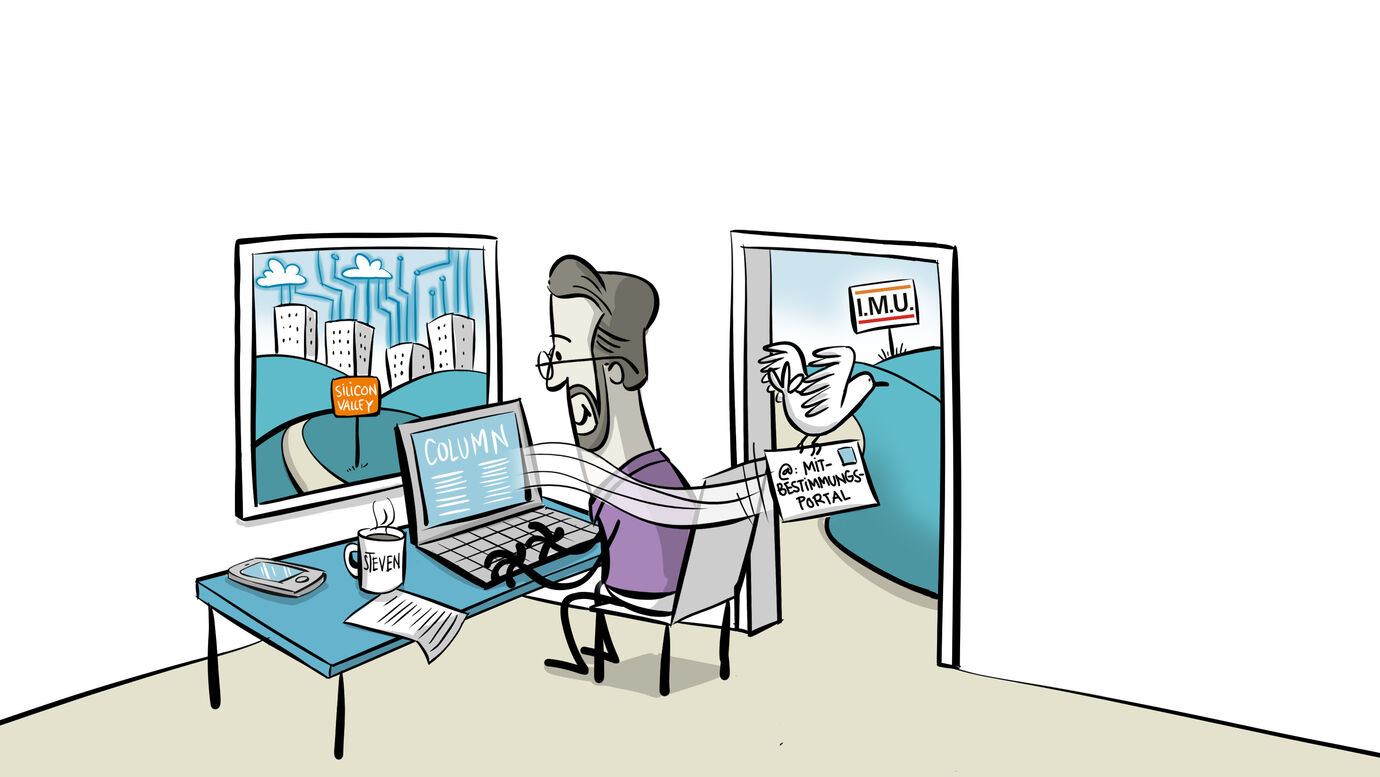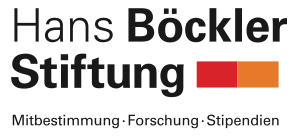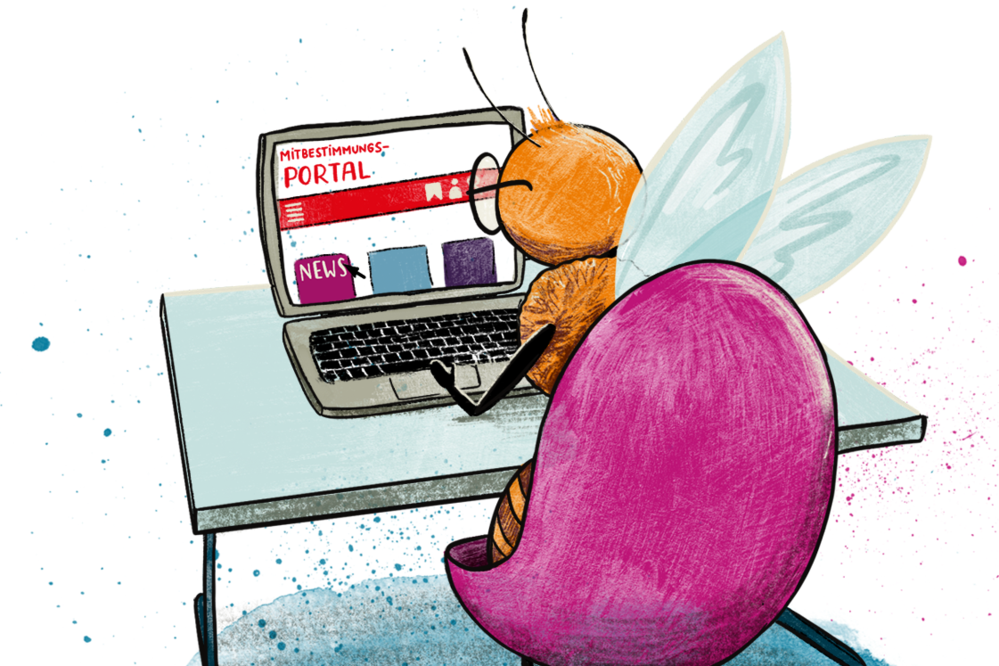Column
US labor unions strike over impacts of AI and new technologies
United Auto Workers and Screen Actors unions see the handwriting on the wall, and are fighting back against new AI and EV technologies that threaten to upend their industries and kill their jobs.

Hollywood actors and Detroit autoworkers are not usually considered to have much in common. Blue-collar assembly line workers toil away in factories while actors and screenwriters are engaged in the creative arts for the silver screen. Their work conditions and future employment prospects seemingly operate according to different economic laws.
But new technologies like artificial intelligence and electric cars are so disruptive across these occupations and industries that both of these occupation groups have gone on strike recently in efforts to define the new conditions of their workplaces. Previously for Mitbestimmungsportal, I reported on the growing use of insidious new technologies in the workplaces, from worker surveillance technologies to robot time clocks that undercount workers’ hours. The notorious case of Amazon’s surveillance of employees and their second-by-second productivity scores is well documented, but less known are occupations like Kroger cashiers, UPS drivers, chaplains on a time clock and many others. The New York Times has reported that 8 of the 10 largest private U.S. employers track the productivity metrics of individual workers, many in real time.
AI and new technologies penetrating more sectors
Now the new digital technologies are spreading like wildfire into other occupations, one’s previously inconceivable. One of the most insidious – and dangerous to the future of their work – is the use of artificial intelligence to create fake virtual identities of actors, including famous actors. Who owns the image of an actor like Academy Award winner Tom Hanks, star of films like Forrest Gump, The Da Vinci Code and Bridge of Spies? Is it Hanks, or anyone with the AI tools to precisely mimic his face, his voice and mannerisms?
In early October, Hanks issued a warning to his 9.5 million followers on Instagram that an advertisement for a dental plan using his likeness and voice substitute was fraudulent and based on an artificial intelligence version of him. Then Gayle King, the nationally known co-host of “CBS Mornings,” warned her followers on social media that video ads using her AI likenesses oto promote a weight loss “secret” was unauthorized and fake. Famous comedian and actor Sarah Silverman filed copyright infringement lawsuits against two of the most prominent generative AI companies, OpenAI (the company behind ChatGPT), and Facebook parent company, Meta, alleging that these companies used her copyrighted material without permission to train the companies’ chat bots and AI language models.
Any actor’s likeness can be replaced by a computer-generated stand-in in a matter of hours.
This ability by tech specialists to take digital ones and zeros and turn them into a mimicked face, voice and video character has grown astonishingly fast. Companies like Deep Voodoo are working with movie studios to put famous actors’ faces on stunt doubles, and even to revive deceased movie stars. The voices of the late Anthony Bourdain and the late Andy Warhol have both been recreated for recent documentaries. The technology has progressed so quickly that any actor’s likeness can be replaced by a computer-generated stand-in in a matter of hours.
AI also affecting the not-so-famous
As the technology to “create” without the creators spreads, not only do star actors fear they will lose control over their lucrative likenesses, but lesser known actors fear they’ll be replaced altogether. The studios are developing the AI technology to reuse digital replicas to simulate background actors, squeezing out performers who have long filled background roles as a route to becoming working actors. The technology could be used to create digital replicas of actors without payment or approval. Actors who have based their careers on being extras, stand-ins or stunt doubles, or doing “voice-overs” for TV, film and advertisements, could see their Shakespearean tenor cloned and themselves out of work. Many predict that without stricter regulation, non-celebrity actors’ work will be replicated and remixed by AI tools, both cutting their control over their work and hurting their ability to earn a living.
The screen actors labor union, SAG-AFTRA and its 160,000 performer members (including dancers and recording artists, in addition to actors), joined with the Writer’s Guild of America to try and negotiate with the movie industry corporations over new rules for how these technologies will be used in their professions. The unions called for protections against the unauthorized use of their members’ likenesses, voices and names, as well as scripts and other written materials. Writers fear they’ll have to share credit, or even lose credit, to machines that don’t have to pay any monthly bills.
These issues, combined with more traditional wage, benefits and job protection issues, is the wild card in the breakdown of contract negotiations that led to actors and writers unions to go on a months-long strike starting this past summer, paralyzing the industry. Dozens of movies and TV shows, including “The Late Show With Stephen Colbert,” “Saturday Night Live,” sequels to the Lord of the Rings, Dune, Mission: Impossible and Gladiator, have had to postpone production or delay their release. By early October, union leaders for the Hollywood writers had negotiated a contract that was approved near-unanimously by the Hollywood writers, ending their strike after nearly five months. And in early November after 118 days, the longest actors strike in Hollywood history, the parties finally settled. The union won higher wages and pushed streaming services to share more revenue with actors in the form of bonuses. The settlement also established new guardrails for the use of AI, including that studios must obtain the actor's consent before creating or using a digital replica of a performer, whether the actor is an A-list star or a background actor.
Autoworkers: different industry, but the same fears of replacement
Half a continent away from Hollywood, in Detroit, Michigan, similar issues and fears have caused autoworkers to go on strike against the biggest auto companies, Ford, GM and Stellantis (maker of Chrysler, Opel, Dodge, Ram, Jeep and Fiat). This battle pits two of President Joe Biden’s top goals — fighting climate change and expanding the middle class by supporting unions — into a collision that is playing out in dramatic terms.
In May, the United Auto Workers, which has about 400,000 members and normally supports Democratic presidential candidates, withheld its endorsement of Biden’s re-election. Biden, who calls himself a “union president” and has been courting the UAW, made history in late September by becoming the first sitting president to walk a picket line with striking workers at an auto parts distribution center. Yet still the union and autoworkers are criticizing Biden.
There’s no guarantee that those factories will replace all the jobs lost, or be unionized.
The issue? Last year the Biden administration pushed through billions of dollars in federal subsidies to create new manufacturing jobs producing electric cars and batteries, as well as subsidies for consumers to purchase electric cars. This has helped spur a surge in new electric vehicle (EV) plants and battery-making facilities. Sales of electric vehicles in the US are set to hit one million for the first time ever this year.
But many in the UAW fear that the transition will cost jobs because electric vehicles require far fewer people to assemble. Electric vehicles also require far fewer parts; for example they don’t need components like spark plugs, oil filters and many other parts associated with internal combustion engines. Although there will be new jobs created in the production of high-capacity batteries, there’s no guarantee that those factories will replace all the jobs lost, or be unionized. So far the plan is for new factories to be located in US states more hostile to organized labor. Will this transition accelerate the decline of unionized work in the industry?
That’s the big fear. The UAW has tried and failed to organize workers at Tesla’s factory in Fremont, California, and at plants in the South owned by Volkswagen and Nissan. In the year since the Biden administration passed its signature Inflation Reduction Act providing the federal subsidies, the U.S. has seen more than $92 billion in investment in electric vehicles. However, most of that money is going to battery and battery-component plants that lie outside the UAW stronghold states in the Midwest. Those operations are being structured as joint ventures with Korean battery makers which don't fall under the umbrella of the UAW. So the EV plants have not been part of the national labor agreements between the union and the automakers. Legally, employees of the Big Three manufacturers can’t strike over the pay of battery workers employed by joint ventures.
Shawn Fain, president of the United Auto Workers says so far the net result of these federal subsidies into electric cars has been disappointing. He uses strong language like “sweatshop” and “race to the bottom” when comparing the difference in wages and work conditions between the autoworkers under contract, and those workers in the battery and battery-component plants working in non-union shops.
“You have workers on $16.50 an hour, which is less than what you’d get working for Waffle House. It’s criminal,” he says. That amount is far below the roughly $32 an hour that veteran UAW members earn under their existing contracts with the Big Three.
A defining moment for labor
“This is our generation’s defining moment with electric vehicles,” says Fain. “The government should invest in US manufacturing, but money can’t go to companies with no strings attached. Labor needs a seat at the table. There should be labor standards built in, this is the future of the car industry at stake.”
All of these pressures built to a boil this fall, resulting in a strike by UAW workers, the first major one in several years. Union officials have pressed the auto companies to address their concerns about battery workers before its members vote on a new contract. They say the companies can afford to pay more for the battery workers because the auto companies collectively earned about $250 billion in North America over the past decade.
The UAW started the strike on September 15 with a targeted work stoppage by 12,700 members at one assembly plant for each company. A week later it added a series of 38 parts and distribution centers in 20 states owned by GM and Stellantis. Besides President Biden’s appearance on a picket line, the Biden administration has been using back channels to urge the auto companies to negotiate fairly with the UAW. Biden has credited the UAW with saving the auto sector in the past by making sacrifices, such as during the 2008 economic crisis when the auto companies nearly went bankrupt and the unions made significant concessions. Those concessions are now front and center in today's strike. Speaking through a bullhorn at the picket line, Biden shouted, “Now [the auto companies] are doing incredibly well. And guess what? You should be doing incredibly well, too.”
Initial progress was made in negotiations, but then it stalled as the Big Three dug in their heels. The UAW adopted a strategy of striking and shutting down targeted factories that were the most profitable for each of the auto companies. With 150,000 UAW members employed, the union eventually called on more than 45,000 of those workers to walk off their jobs at factories and spare parts warehouses across the country. Recently G.M. said that the strike had lowered its earnings by about $800 million.
The agreements also provide some protections to workers as electric vehicles replace gasoline models
But finally the workers and the union prevailed. As of this writing, the UAW and the auto companies have reached tentative agreement that will give workers their biggest pay increases in decades. The agreements include a 25 percent pay increase over the next 4.5 years, as well as cost-of-living adjustments. The top wage would rise to more than $40 over the life of the new contract, from $32 an hour, which will allow full-time employees to earn about $84,000 a year (in Germany, the average hourly wage of an auto worker is about $34, or €32). The agreements also provide some protections to workers as electric vehicles replace gasoline models. For example at Ford, workers at battery factories that the company plans to build would be covered by the terms of the union contract. And at GM, workers at battery-making joint ventures will be covered by the new contract.
This new agreement will set the stage for demands for higher pay at nonunion automakers like Tesla and Toyota. Even if those union campaigns fail, there will likely be a trickle-down effect that spurs those companies to give raises to workers.
What will the “AI future” look like for workers and unions?
As much as the Biden administration has provided crucial cheerleading support for these and other striking workers, it declined to include a number of pro-worker provisions in its IRA legislation. For example, it could have required all companies that apply for the federal funding to sign collective bargaining agreements, or that any joint ventures for the emerging EV industry include battery workers under existing labor contracts. But with a slim one-vote majority in the US Senate, conservative Democratic senators prevented any such progressive provisions from being included in the federal law.
If the social and labor costs are not taken into consideration, workers will be hurt in the transition
Another important lesson here is that a focus on the Energiewende “green transition” is necessary but not sufficient. If the social and labor costs are not taken into consideration, workers will be hurt in the transition as one hand steals from the other. As I have previously reported for Mitbestimmungsportal, in the US both major political parties have strong financial ties to Big Tech and Wall Street. That seems to result in a lot of promises from Democrats to workers that don’t ever get more than half-fulfilled.
In the meantime, the pace of AI and other new digital technologies marches on relentlessly. If new and emerging digital and AI technologies can penetrate into occupations as diverse as actors and autoworkers, where will they insert themselves next? The omnipresent threat is that good jobs will be replaced by either bad jobs or no jobs. Workers and their unions from a number of different sectors, occupations and industries will benefit greatly by joining forces to fight for policies and technology implementation that supports society and ensures good jobs and working conditions.
The strength of a nation’s social contract and the design of its political economy are becoming more important than ever. The stakes are high, and workers and their union representatives are fighting to be full partners at the table with Big Tech and other businesses so that the labor gains of the past half-century are not lost in this transition. It is crucial to the continuance of the “middle-class society” that workers and their union representatives have a key role in establishing the new policies and guidelines.
German Language Version
-
Column
AI's impact on US workplaces continues to accelerate
-
Column
Trump and Musk mounting furious attack on labor rights and workers
-
Column
US support for codetermination from an unlikely source – conservative Republicans
-
Column
Can the EU and the US protect their 21st century workforces?
-
Column
Massive tech layoffs continue as companies retool for AI
-
Column
US labor unions strike over impacts of AI and new technologies
-
Column
Antitrust law is (finally) being enforced again in the U.S.
-
Column
Employer surveillance against workers spreads
-
Column
If it seems too good to be true … it probably is
-
Column
Helping gig workers help themselves
-
Column
Workers of the World…quit?
-
Column
Will US labor unions stand by Uber drivers and gig workers?
-
Column
Stirrings of union organizing in the “paradise” of Big Tech
-
Column
Will Pres. Joe Biden restore worker and union power?
-
Column
Corona-fied: employers spying on remote workers in their homes?
-
Column
The challenges of the post-coronavirus workforce
-
Column
Amazon workers fight back
-
Column
A blow against "bogus self-employment" and gig economy
-
Column
Renewing Worker Cooperatives for the Digital Age
-
Column
Codetermination takes the spotlight in the US
-
Column
Who will fight for the 'good jobs' economy?
-
Column
Trump attacks workers and the labor movement in the US
-
Column
The distributed workforce: what will jobs of the future look like?
-
Column
The "Uber way" of precarious work



